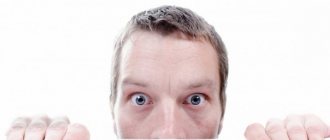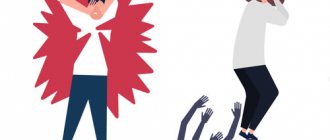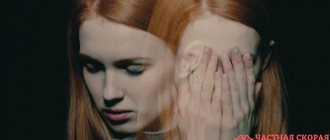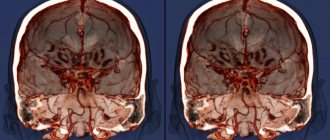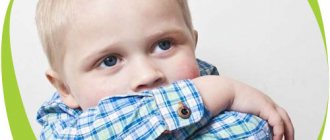Cost of services
| TREATMENT OF DEPRESSION, NEUROSIS | |
| NAME OF SERVICE | price, rub. |
| Consultation with a therapist (observation) | 3,000 rubles |
| Consultation with a neurologist (observation) | 3,000 rubles |
| Consultation with a psychologist | 2,000 rubles |
| Psychiatrist consultation | 5,000 rubles |
| Consultation with the head of the department | 4,500 rubles |
| CONSULTATIONS, INITIAL INSPECTION | |
| NAME OF SERVICE | price, rub. |
| Telephone consultation | For free! |
| Telephone consultation for relatives | For free! |
| Initial consultation with a psychiatrist-narcologist in a hospital | For free! |
| Initial consultation with a psychologist by phone | For free! |
| Visit of a narcologist and consultation at home | 1,500 rubles |
| Consultation with a psychotherapist, psychologist in the clinic | 2,000 rubles |
| Initial appointment, examination by a doctor, cubital catheter, ECG | 2,500 rubles |
| Consultation with a therapist, neurologist, surgeon | 3,000 rubles |
| Family consultation with a psychologist | 3,000 rubles |
| Psychiatrist consultation | 4,000 rubles |
| Consultation with the head of the department | 4,500 rubles |
| PROMOTIONS AND DISCOUNTS | |
| When applying again | 5% discount on treatment |
| Disabled people and war veterans | 5% discount on treatment |
| Large families | 10% discount on treatment |
* Dear patients! The administration tries to promptly update the price list posted on the website, but in order to avoid possible misunderstandings, we ask you to clarify the cost of services on the day of your call by calling 24/7.
The posted price list is not an offer.
Get a free consultation
+7(495) 798-30-80
Causes and symptoms of panic attacks in children
The following factors can lead to panic attacks in a child:
- parents paid too little or too much attention to him;
- anxious attitude of parents, intimidation of the child;
- actual isolation, loneliness with a formally complete family and the presence of comrades;
- stressful situations in early childhood or in the present time;
- external factors, lack of understanding of certain situations that cause children's fears.
You need to understand that in most cases, it is the parents who shape the character and personality of the child, influencing his behavior and adequate perception of the world around him.
Panic attacks in children require immediate treatment if the following symptoms are present:
- dizziness,
- sweating,
- cardiopalmus,
- lump in throat (“I can’t breathe”),
- strange movements (slow or unusually sharp),
- pain in the chest and stomach,
- fear of going crazy
- thoughts of death,
- feeling of one's own insignificance.
These are very dangerous signs that cause harm to the child’s still unstable psyche and health.
Panic attacks in children and adolescents
Ordinary hysteria or a serious disorder of the nervous system? It is difficult for parents on their own to figure out the reasons for the appearance of screaming, tears or sudden panic for no reason. This means a consultation with a pediatric neurologist is required.
Why does a panic attack occur in teenagers?
Attacks of unreasonable anxiety occur in children of any age. Panic attack is a dysfunction of the autonomic nervous system caused by vegetative-vascular dystonia. There is a malfunction in the functioning of the sympathetic and parasympathetic departments.
The trigger for panic attacks are external factors:
- severe stress (moving to a new city, transferring to another school, parental divorce);
- unfavorable psychological microclimate in the family (fights, alcoholism or drug addiction of close relatives);
- parental overprotection;
- material difficulties (adults talking about debts, mortgages, loans);
- lack of shared recreation with parents.
It is impossible to avoid these events. They act as stressors (stress triggers). Normally, the sympathetic and parasympathetic divisions of the autonomic nervous system “digest” negative emotions. The body's compensatory mechanisms help the cardiovascular, respiratory and other systems to mobilize during difficult periods.
But internal factors are also added here. PA attacks (panic attacks) become more frequent when:
- Hormonal changes (puberty).
- Traumatic brain injuries.
- Asphyxia during pregnancy.
- Hereditary predisposition.
Therefore, no child is immune from developing the disorder. At a certain point, the body’s compensatory forces cease to cope, and damage to the nervous tissue occurs.
How do panic attacks manifest in children and adolescents?
A case from the practice of the center’s neurologists: “The mother of a five-year-old child came to us. Since infancy, the child suffered from attacks of headaches. The girl grabbed her head and screamed loudly. When I learned to speak, during attacks I repeated: my head hurts, I’m scared. I had problems sleeping and nightmares. The child trembled when falling asleep, froze in the warmth, and wrapped himself in blankets.
One day, during an attack, chills began. The ambulance doctors measured the blood pressure at 130/100, which is extremely high for a preschool child. With age, the attacks became more frequent and lasted 40 minutes. These included weakness, lack of body weight, pain in the arms and legs without visible injuries. Several courses of therapy at the Clinical Center for Autonomic Neurology eliminated the attacks and normalized the appetite. The child went to kindergarten, then to school. PA did not return"
In children, a panic attack is accompanied by:
- shallow breathing;
- dizziness;
- we cry;
- increased sweating;
- nausea and vomiting;
- shortness of breath;
- headache;
- cramps in the stomach;
- tremor of the limbs.
What to do if panic attacks occur at night?
A panic attack can happen at any time of the day. The main thing is that there is an adult with the child who will provide first aid without worry. An algorithm of actions recommended by pediatric neurologists will help with this.
How to calm a child during a panic attack?
- Hug your teenager and turn on a dim light.
- Teach to breathe deeply. During a panic attack, the child takes shallow, rapid breaths. Advise your child to inhale slowly and deeply, hold the breath for 3 seconds and exhale just as slowly through the mouth. Repeat the exercise 5 times. Actively engage your stomach as you inhale and exhale.
- Remove tension. During an attack, the teenager feels numbness in the body. It seems to him that he does not control his wooden limbs or chest. Ask your child to lie on the bed, curl up in a ball, pressing his legs, bent at the knees, tightly to his stomach. The position reflexively relaxes the skeletal muscles, the child will feel better.
Is it possible to die from a panic attack?
Shortness of breath, chest pain, dizziness frightens the child and his parents. During an attack, adults fear that the preschooler or teenager will die. This is wrong. Excess adrenaline in the blood and high blood pressure harm the body, but do not kill the child during a panic attack.
Nevertheless, this disorder of the autonomic system is dangerous. The child begins to fear an attack long before it begins. He avoids new groups, crowds of people, active games and entertainment in every possible way. Gradually, the teenager is overcome by depressive thoughts of insanity and suicide.
Parents should not turn a blind eye to attacks of unreasonable fear or scold for emotionality or hysteria. Just sign your child up for a consultation at the Clinical Center for Autonomic Neurology.
Which doctor should I contact?
Due to the simultaneous presence of somatic and mental disorders, it is difficult for parents to choose a specialist to treat a teenager. If you suspect a panic attack, doctors at the Clinical Center for Autonomic Neurology advise you to undergo diagnostics in the clinic.
“The variety of symptoms in PA baffles doctors. Many years of experience, the use of foreign research and the modern technical base of the center make it possible not only to identify the cause (autonomic dysfunction), but also to solve the problem using physiotherapeutic methods. No heavy drugs. No harm to the psyche. Without consequences for the kidneys, heart and liver. Effective and permanent for a child of any age.”
A.I. Belenko, Head of the Clinical Center for Autonomic Neurology, Candidate of Medical Sciences.
How to diagnose panic disorder in children?
To determine foci of autoimmune inflammation of the ganglia, disturbances in the functioning of the parasympathetic and sympathetic departments at the Clinical Center for Autonomic Neurology, the following is used:
- Computer thermography. The autonomic nervous system is responsible for thermoregulation. A thermal imager takes pictures of the body or part of it. The camera detects spasmodic areas, circulatory and lymph flow disorders, and areas of increased tension.
- Cardiorhythmography. A cardiogram is taken at rest, with little physical activity, and during the recovery period. Diagnostics informs about 86 indicators of the functioning of the cardiovascular, respiratory, and nervous systems.
In 1.5-2 hours, neurologists get a complete picture of the functioning of the nervous system and the localization of foci of inflammation. The methods are painless and do not have a negative effect on the body.
Can panic attacks in adolescence be completely cured?
The clinic’s neurologists are confident that autoimmune inflammation of the vegetative nodes can be eliminated once and for all. Diagnostics shows foci of inflammation. Next, the Clinical Center for Autonomic Neurology draws up an individual treatment program for the child. Using physiotherapy and non-medicinal methods, doctors restore innervation, regenerate nervous tissue and improve metabolic processes and the functioning of internal organs.
Unlike classical methods of treating PA, the Clinical Center for Autonomic Neurology does not use hypnosis, tranquilizers or antidepressants. No one influences the child’s psyche with chemicals. Therefore, therapy for panic attacks in children has no age restrictions or contraindications.
Depending on the number of foci of autoimmune inflammation, the patient’s age and the duration of the disorder, 1 or several courses are prescribed at 6-month intervals.
What methods of prevention exist?
Pediatric neurologists recommend during the period of active growth of a child:
- stick to the daily schedule. Sleep - at least 9 hours. During sleep, the nervous system is restored, the body compensates for the effects of stress;
- exclude tonic substances from the diet: coffee, tea, cola and Pepsi, energy drinks;
- exercise. Cardio exercises have a beneficial effect on the nervous system: running, swimming, cycling. If possible, send a child with increased excitability to special children's yoga.
A panic attack is not a death sentence for a teenager. Modern non-drug methods restore the nervous system, eliminate somatic disorders and return the child to normal life in society.
Treatment of panic attacks in children in medical
Our center’s specialists are highly qualified to select the necessary therapy taking into account the child’s character, behavior, and severity of the disease. The treatment process can take place either on an outpatient basis (in a clinic) or at home, with periodic visits to a doctor at a medical center.
The main methods of treating childhood panic attacks are medication and psychotherapy. In some cases, complex treatment may be necessary. The specialist will also teach the child relaxation techniques.
Get a free consultation
+7(495) 798-30-80
Don't forget that parents play an important role in treating panic attacks in children. They must support their baby, help him with a panic attack and in other difficult life situations. If necessary, our specialists will conduct family psychotherapy, during which you can learn how to interact correctly with your child and provide him with support during the treatment process.
The text was checked by expert doctors: Head of the socio-psychological service of the Alkoklinik MC, psychologist Yu.P. Baranova, L.A. Serova, a psychiatrist-narcologist.
CAN'T FIND THE ANSWER?
Consult a specialist
Or call: +7 (495) 798-30-80
Call! We work around the clock!
What are the causes of panic attacks in children?
There are different opinions on this matter. Some suggest that panic disorders are a consequence of the fact that children spend a lot of time in front of the TV, playing computer games, etc. Others believe that all psychological disorders are provoked by an unfavorable family environment. The true causes of panic disorders in a child can only be identified by a child psychologist or psychotherapist. Thus, in order to diagnose “children’s problems,” our Center’s specialists conduct a series of consultations with the child, conversations with parents, and the necessary diagnostic examinations. Only in this case can the nature of a particular disorder be identified and appropriate treatment prescribed.
As experience shows, the roots of most psychological deviations are in the sphere of our unconscious. Mental health disorders in childhood are no exception. That is why, in order to help a child cope with panic attacks, you should not give him sedatives, but accompany him to a child psychologist.
